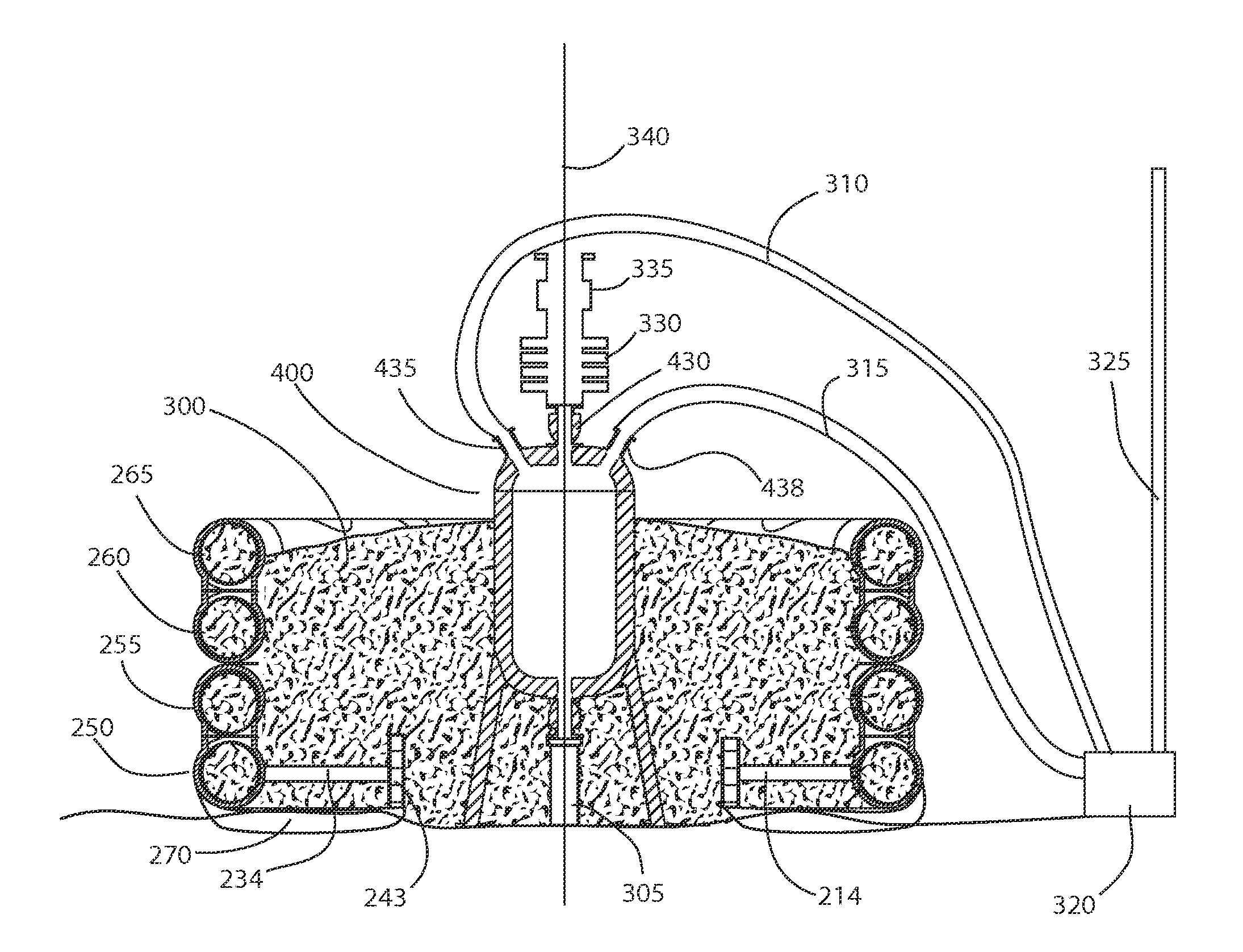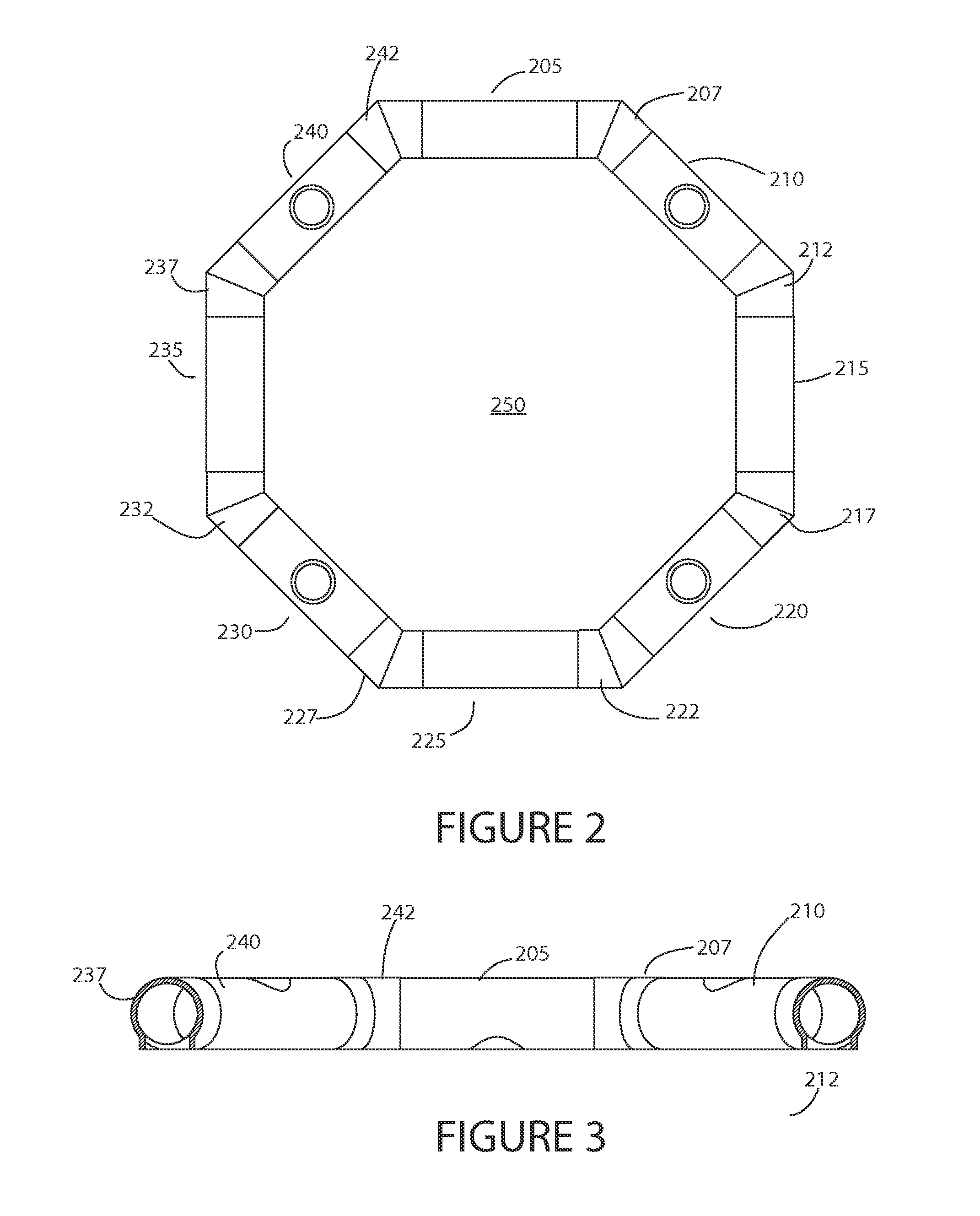Method and system for confining and salvaging oil and methane leakage from offshore locations and extraction operations
a technology for extraction operations, applied in the field of offshore can solve the problems of serious oil and gas leakage which can be extremely difficult to control, prior art systems and methods do not effectively anchor the containment vessel into place, and the source of water pollution of drilling operations is potentially serious
- Summary
- Abstract
- Description
- Claims
- Application Information
AI Technical Summary
Benefits of technology
Problems solved by technology
Method used
Image
Examples
Embodiment Construction
[0032]An exemplary system according to principles of the invention includes three main components as well as optional and subsidiary components. A first main component is a rigid containment barrier capable of holding thousands of tons of concrete ballast, and providing structural reinforcement for a containment vessel. A second main component is a containment vessel capable of withstanding pressures of leaking hydrocarbon fluids materials. A third main component is a pumped concrete foundation that provides a stable base upon which a containment vessel may rest, anchors the containment vessel in place and partially encapsulates the exterior of the containment vessel. A fourth and optional component is a flexible catenary gasket providing a bottom surface that conforms to the seabed and upon which concrete is pumped. Additional components include client-specified fittings, incorporated into the containment vessel, enabling the system to be used with or incorporated as a part of the ...
PUM
 Login to View More
Login to View More Abstract
Description
Claims
Application Information
 Login to View More
Login to View More - R&D
- Intellectual Property
- Life Sciences
- Materials
- Tech Scout
- Unparalleled Data Quality
- Higher Quality Content
- 60% Fewer Hallucinations
Browse by: Latest US Patents, China's latest patents, Technical Efficacy Thesaurus, Application Domain, Technology Topic, Popular Technical Reports.
© 2025 PatSnap. All rights reserved.Legal|Privacy policy|Modern Slavery Act Transparency Statement|Sitemap|About US| Contact US: help@patsnap.com



